
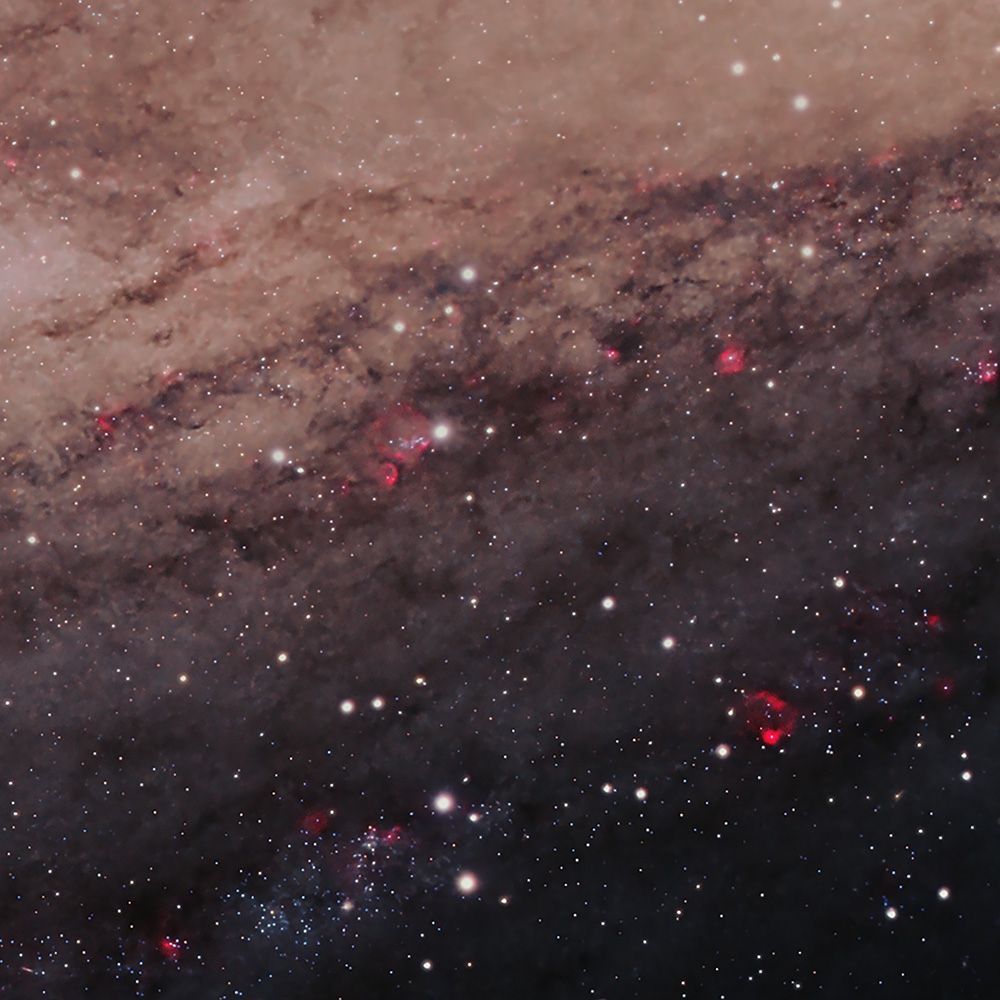
ANDROMEDA GALAXY
SERIES 1 OF 2
Stretching nearly six times the width of the full moon, this galaxy is the largest in the night sky and can even be seen with the naked eye from dark locations.
Capturing this level of detail took nearly 20 hours of exposure time over three nights, using RGB filters along with hydrogen data to highlight the vibrant red, star-forming regions scattered throughout.
To better showcase its intricate structure, I chose to show the galaxy as two square images, offering a closer, more detailed view of this vast galaxy.
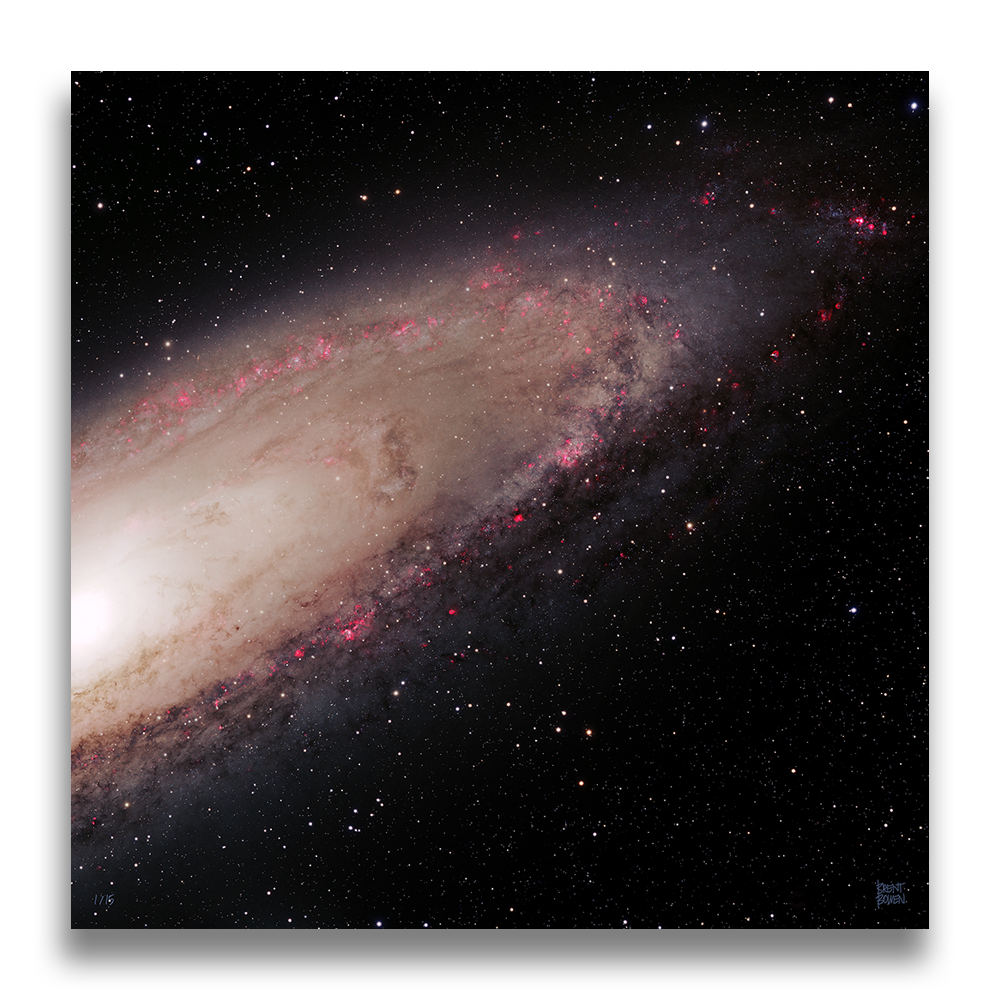

ANDROMEDA GALAXY
SERIES 2 OF 2
This is the second image in my Andromeda Galaxy series, cropped from a single larger frame to focus on a different section of the galaxy’s breathtaking structure.
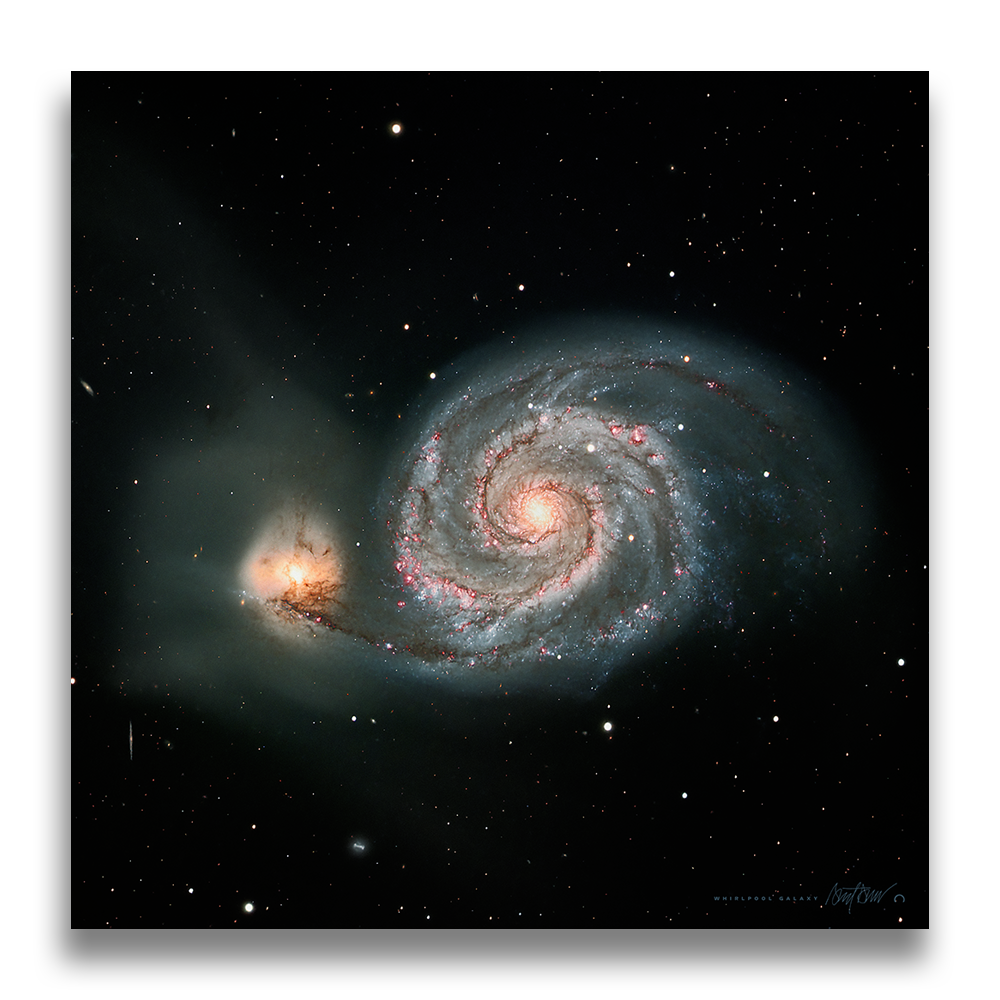
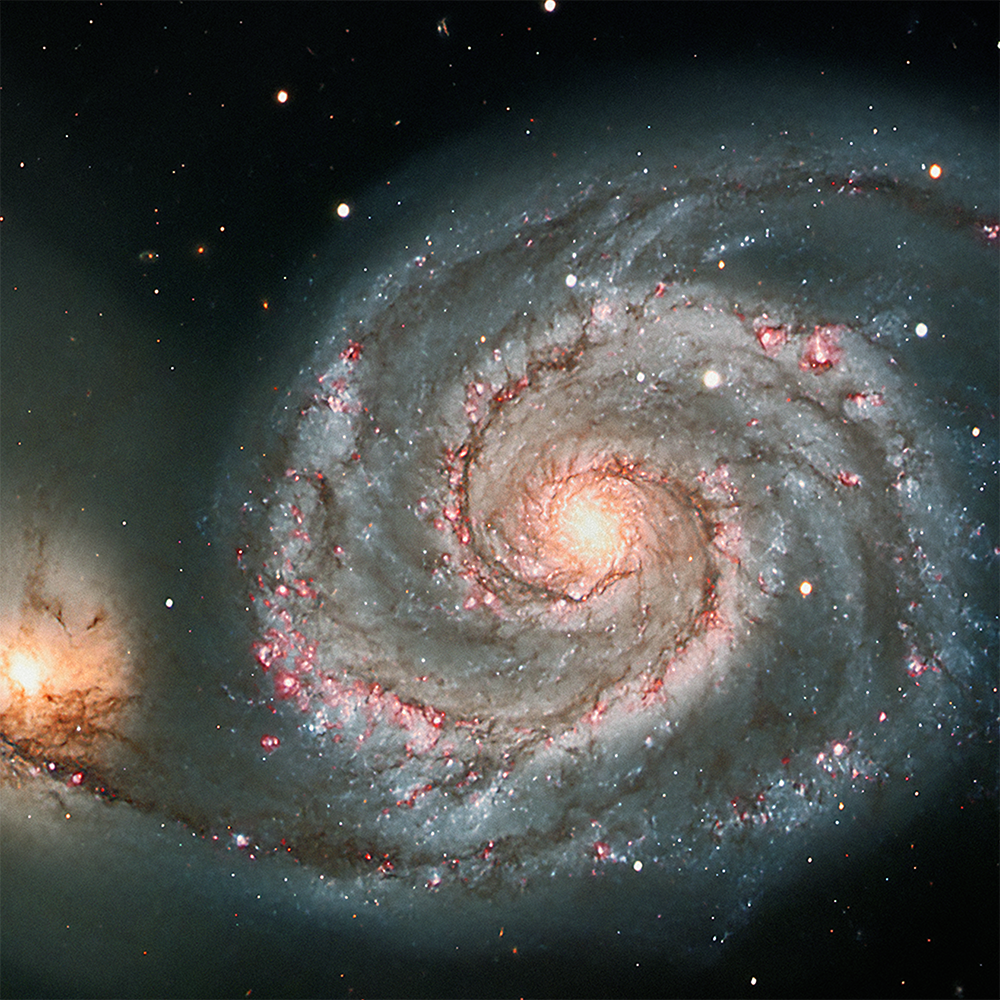
WHIRLPOOL GALAXY
This galaxy was the first I ever photographed, captured many years ago—well before I built the observatory. As one of the larger galaxies in the night sky, it’s a little more forgiving to photograph compared to others, but still full of wonder.
I was pleasantly surprised by the level of detail I was able to achieve, thanks to the combination of an 11-inch telescope and the exceptionally dark, clear skies.
This image is shown in near-true color, using RGB filters, and reveals numerous star-forming regions of hydrogen, visible as vivid red patches scattered across the galaxy’s graceful arms.
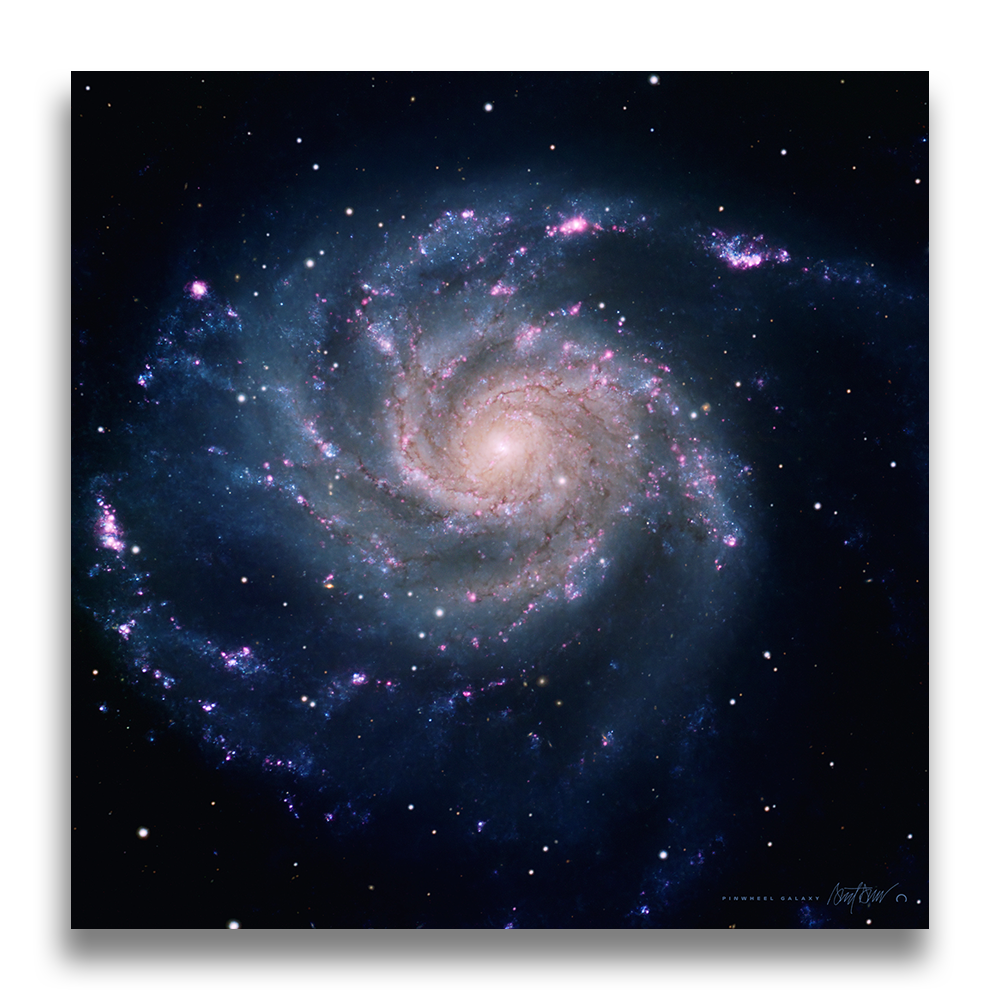
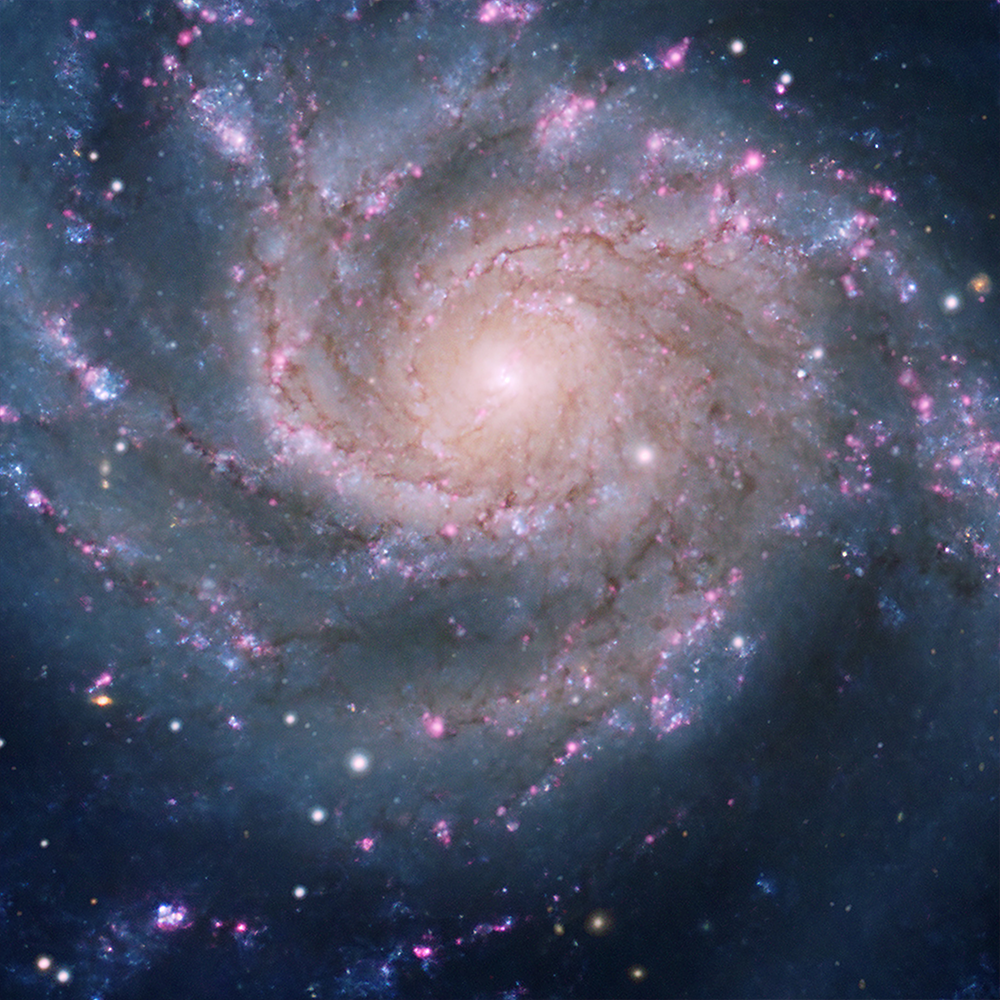
PINWHEEL GALAXY
The Pinwheel Galaxy is a strikingly large galaxy in our sky, known for its slightly unusual spiral arms.
One of the most intriguing features in this image is the wide arm at the bottom left, which appears to be torn apart, as if splitting right down the middle.
Captured in true color, this image also highlights the star-forming regions of the galaxy, with red hues marking areas rich in hydrogen where new stars are born.


